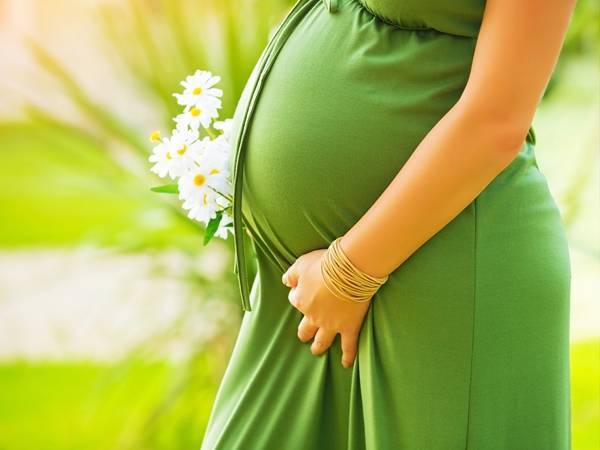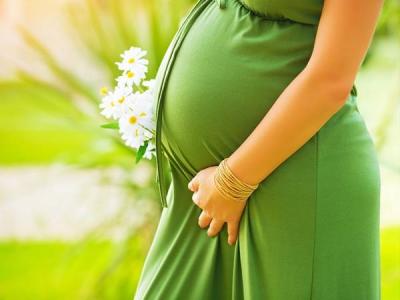It used to be common belief that once a woman underwent a cesarean section, all subsequent births would also need to be done via cesarean. However, today, it's possible for many women to have a natural birth after cesarean (VBAC) due to advancements in modern surgical techniques. If you choose to have a natural birth after a cesarean, it should be done in a well-equipped hospital that has facilities for emergency surgeries and a neonatal unit for proper care of the baby.
Women consider having a natural birth after cesarean for several reasons, including:
1. **Fewer Complications**
The likelihood of complications such as infection and severe blood loss is lower with a successful natural birth after a cesarean compared to complications that increase with repeated cesarean deliveries. However, if the attempt at natural birth fails, the only option for delivering the baby is a cesarean, which carries a higher risk of infection compared to a planned cesarean.
2. **Shorter Recovery Time**
Your hospital stay will be shorter after a natural birth than after a repeat cesarean. Avoiding surgery helps you regain your strength and stamina more quickly, in addition to reducing delivery costs.
3. **Greater Participation in the Birth Process**
For some women, participation in the natural birth experience is very important. If you have a successful natural birth after cesarean, you are likely to wait and breastfeed your baby more quickly compared to breastfeeding after a repeat cesarean.
4. **Impact on Future Pregnancies**
If you plan to become pregnant again, a natural birth after cesarean may be the better option for future deliveries, as the complications associated with repeated cesareans increase over time. Having multiple natural births after cesarean can gradually become easier.
### What Are the Risks of Natural Birth Following a Cesarean?
- **Labor Failure**
One of the most common risks is the failure of labor. Research on women attempting a natural birth after cesarean shows that 60% to 80% have a successful outcome. Labor failure leads to a repeat cesarean in about 25% of women who attempt a natural birth, usually due to the baby not tolerating labor.
- **Uterine Infection**
If a repeat cesarean becomes necessary after labor has begun, you may face slightly higher risks of complications from the cesarean delivery, such as uterine infection, compared to undergoing a scheduled cesarean.
- **Uterine Rupture**
One of the most concerning risks in natural birth after cesarean is uterine rupture along the scar line from the previous cesarean or major uterine surgery. If this occurs, an emergency cesarean must be performed to prevent life-threatening complications, including severe bleeding, infection, and brain damage to the baby. In some cases, a hysterectomy may be necessary to stop the bleeding, which would prevent any future pregnancies.
- **Pelvic Floor Issues**
For some women, pelvic floor problems may also be a concern, as the weight of the baby and the associated pressure can weaken the pelvic floor muscles supporting the uterus. Natural birth may lead to increased stretching of these muscles, potentially causing temporary urinary incontinence, especially among those undergoing natural birth.
### Who Is Eligible for Natural Birth After Cesarean?
Your qualifications for a natural birth after cesarean depend on several factors, such as:
- The woman has had at least one natural birth prior to the previous cesarean.
- The type of uterine incision made during the previous cesarean, as women with a low transverse incision are generally eligible for a natural birth. Conversely, those with a vertical incision at the top of the uterus (traditional surgical incision) are not recommended for natural birth due to the risk of uterine rupture.
- If the previous cesarean was necessary for a reason that no longer applies in the current pregnancy, such as the baby's position, you may be a good candidate for a natural birth.
- The number of cesareans you have had; you may not be a good candidate for a natural birth after cesarean if you have had multiple cesareans.
- The risk of uterine rupture increases if you attempt a natural birth too soon after the previous cesarean, for example, within 18 to 24 months.
- Cesarean delivery may be recommended if you have placental issues, a breech baby, or an infection that could be transmitted to your baby during a natural birth, such as genital herpes or HIV.
The chances of successful natural birth following a cesarean decrease in the following situations:
- If labor is significantly delayed past the due date.
- If the baby is unusually large.
- If you have had two or more cesareans and have not had any natural births.
### Are There Recommendations to Enhance the Success of Natural Birth After Cesarean?
- Educate yourself about natural birth after cesarean and discuss your concerns and expectations with your doctor. Ensure that the doctor is fully aware of your medical history, including previous cesarean records and any other uterine procedures.
- Look for a hospital equipped with continuous fetal monitoring, a surgical team that can be quickly mobilized, and the ability to provide anesthesia and blood transfusions around the clock.
- Try to begin labor naturally, if possible, since medications that stimulate labor can make contractions stronger and more frequent, increasing the risk of uterine rupture, particularly if the cervix is tightly closed and not ready for labor.




